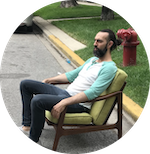Breaking down a script as a director
We’re two weeks away from shooting The Deadline, which is the biggest project I’ve ever done in terms of budget, cast, crew, and pretty much everything else. I have a great producer that I’m working with and she takes a lot of the producing load off of my shoulder but there’s still a lot to do on my side. So much that it sometimes feels like there’s not much time to actually think about directing — what I want from the camera and from the actors.
Now that there’s a lull in producing responsibilities, I’ve been going through the script scene by scene to figure out what I want out of it in terms of camera movement/framing and actor performances. I think that preparation in this realm is essential because I want to have an answer to the eternal question that actors ask: what the hell do you want from me here?
So I came up with this little checklist of what to look for in each scene.
For each scene, find the:
- camera movements
- objectives
- character POVs
- blocking
- circumstances to remember (the moment before, character-specific notes)
- internal states
- moment to moment, anything you want to see
- moments of play or improvisation
- how to play it
- any looks you want or specific reactions to try
The script is only 13 pages and takes place in one location, so by traditional screenwriting rules, it’s only one “scene.” But we broke it out into 13 mini-scenes to make it easier to shoot. And each mini-scene has its own story, its own beginning, middle, and end. I had a writing teacher a few years ago that taught us to break sketches down into beats, and then work each beat to make sure that it told its own little story.
Basically, something should be changing in every mini-beat — an emotional change, a physical one, a status change, etc. Breaking the script down into 13 mini-scenes fits into this framework naturally and makes it easier to answer the above questions at any given moment.
So I take each one and jot things down, usually breaking the notes out into sub-heads: one for camera, and then for each character that appears in the scene. I’ll take these notes with me to rehearsals and to set when we film. My hope is that by the time we’ve rehearsed twice, that these will all be second nature to the actors and myself–we’ll all know what’s supposed to happen so well that we’ll nail it after a few takes and then have time to play and improvise a little bit.
And any time I think of something interesting to try in a scene, I add it to my notes so that I can forget it for now and have it in front of me when I’m working with the actors.
And I don’t write down notes for all the things listed above, just the ones that are apt.
I think this is a useful exercise, even if you don’t end up using any of the notes, because it forces you to clarify what you want and it uncovers any weaknesses in the script (that can be fixed now). I’m always open to happy surprises, but when in doubt, I prefer to be prepared. Some day I hope to be so good that I don’t need to prepare at all and I can do everything by instinct and feel. Until then…
